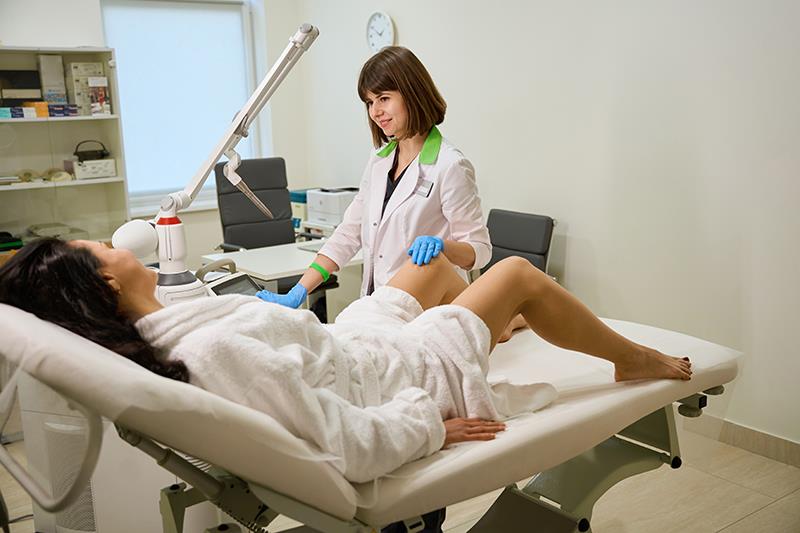How effective is vaginal laser against stress urinary incontinence?





Vaginal lasers confer little to no benefit on women with stress urinary incontinence (SUI), as measured by clinical assessment in the short term relative to sham, control, or topical treatments, reports a study.
“Vaginal lasers may improve patient-reported measures of SUI, but the evidence in uncertain, and the change may not be noticeable to patients,” the investigators said.
Nine randomized controlled trials (RCTs) involving 689 women with SUI were included in this systematic review and meta-analysis. Eligible studies assessed therapy with vaginal laser relative to sham, control, or topical treatments.
Overall, pooled data on vaginal laser compared with sham treatments were uncertain, and only a few studies evaluated outcomes beyond 1 year. [J Urol 2025;214:474-486]
Short-term results showed no significant difference between the number of continent women between vaginal laser and sham treatment groups (risk ratio, 1.50, 95 percent confidence interval [CI], 0.72‒3.10; I2, 81 percent; n=196; very low-certainty evidence).
On the other hand, vaginal lasers led to potential improvements in patient-reported incontinence measures relative to sham, but the point estimate fell short of meeting the prespecified minimally clinical importance differences (mean difference, ‒1.42 points, 95 percent CI, ‒2.41 to ‒0.43; I2, 54 percent; n=632; very low-certainty evidence).
Only a single study had evidence comparing vaginal laser with topical estrogen. Notably, no major adverse events were reported at any time point in any of the treatment groups.
“We did not find any increase in major adverse events among women undergoing vaginal laser treatment as compared with other interventions,” the investigators said. “In fact, there were no major adverse events reported among any patients.”
Previous reviews
Other reviews on the topic of vaginal lasers for treating SUI were either narrative or systematic reviews. [Biomed Res Int 2019;2019:1576359; Prog Urol 2017;27:1076-1083; Int Urogynecol J 2017;28:1445-1451; Der Urologe A 2019;58:284-290; BJOG 2020;127:1338-1346; Int Urogynecol J 2020;32:553-572; Menopausal Med 2022;28:103-111]
Many of the previous reviews also observed significant limitations of current evidence and risk of bias, according to the investigators, noting how the current review expands previous studies by providing updated evidence from relevant RCTs with “robust methodologic rigor, including risk of bias and certainty of evidence assessment.”
“The confidence of our conclusions is limited by the very low to low-certainty evidence,” the investigators said. “This fact underscores the importance of following CONSORT guidelines when designing and registering RCTs.”
Moreover, no data were available to explore the effect of laser settings on outcomes or to perform preplanned subgroup analysis.
“Most of our data were in the short term (<1 year) and a very few studies provided medium term (1‒5 years), and no studies provided >5-year data,” said the investigators, who excluded data from several studies with pooled results from women with heterogenous subtypes of incontinence (SUI, mixed, and urgency UI).
“Future studies may benefit from designs that clearly present outcomes among women with differing types of incontinence, severity of incontinence, and patient comorbidities,” they added.
At present, seven ongoing, registered RCTs are assessing the effect of vaginal lasers on SUI, according to the investigators. “The largest implication for research is to follow-up on the outcomes of these registered trials and incorporate them into updated systematic reviews and meta-analyses.”